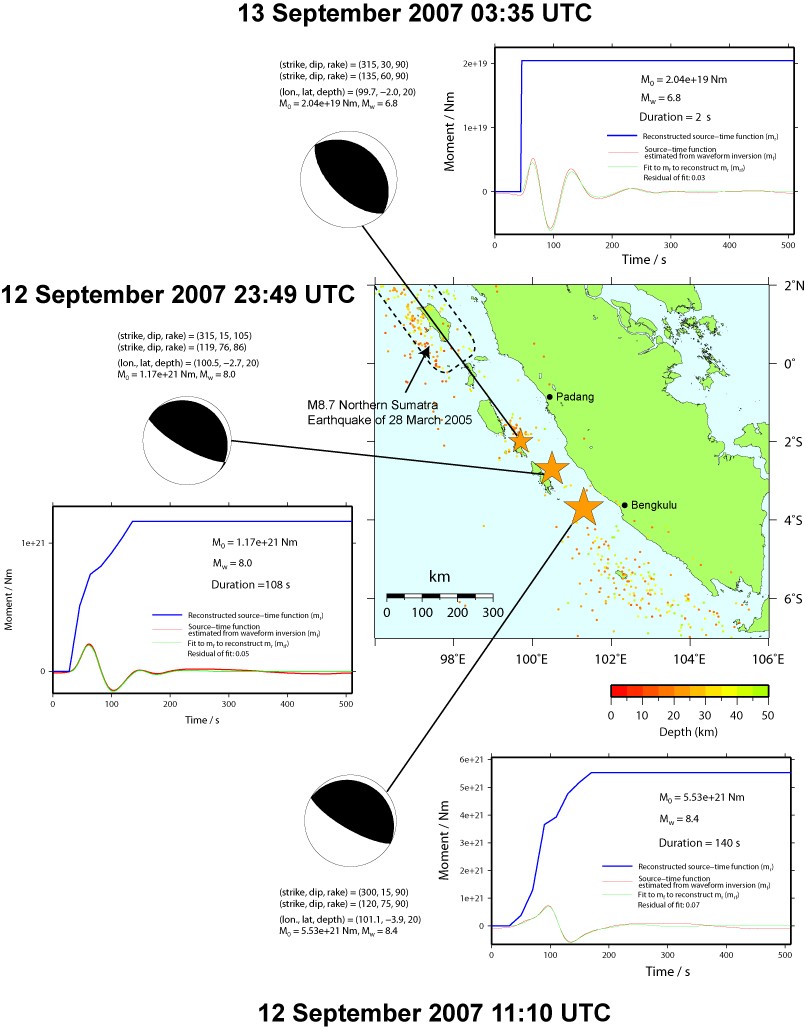Three large earthquakes that occurred on September 2007, in the south region of Sumatra, Indonesia, and their implication
International Seismic Network Laboratory, National Research Institute for Earth Science and Disaster Prevention (NIED)
|
On September 12, 2007, an earthquake with M8.4 occurred at 11:10 (UTC) off Bengkulu, Sumatra, Indonesia. Another earthquake with M8.0 occurred at 23:49 (UTC) on the same day in the northwest of the M8.4 earthquake. Yet another earthquake with M6.8 occurred off-Padang occurred at 03:35(UTC) on September 13. We performed source mechanism analyses of these earthquakes using waveform data obtained by an Indonesian broadband seismic network (JISNET) operated by NIED and Indonesia Meteorological and Geophysical Agency (BMG). The estimated source locations, focal mechanisms, and source-time functions are summarized in the figure shown below. The three earthquakes show a similar thrust-type mechanism, suggesting that these earthquakes occurred in association with the subduction of the Indo-Australian Plate beneath Sumatra Island. The earthquakes caused some casualties and damage to the buildings in Bengkulu and Padang cities. Tsunami with a hight of 1m was observed in Padang, but no severe damage was reported. In the off-Bengkulu area, earthquakes with M8 or above occurred in 1381, 1608 and 1833, approximately every 230 years. Now 174 years have been passed since the last event in 1833. We did not experience M8 class earthquakes during the last 210 years in the Off-Padang area, which is to the north of Bengkulu and immediate south of the March 2005 M8.7 Nias earthquake. The rapid sequence of the M8.4, M8.0 and M6.8 earthquakes moving towards northwest from off-Bengkulu suggests the imminency of a large earthquake off-Padang. We need to watch the crustal activity of this area, and the people in the West Sumatra province with its capital city Padang must be well prepared for the large earthquake and tsunami. |
